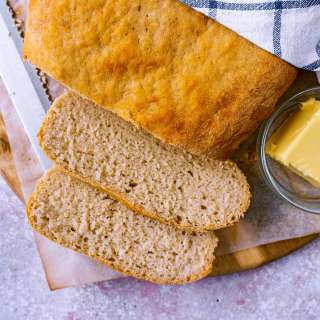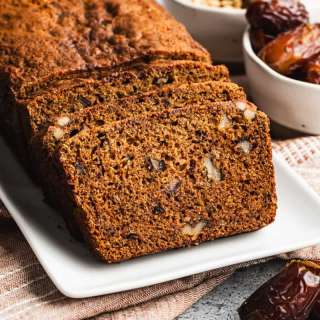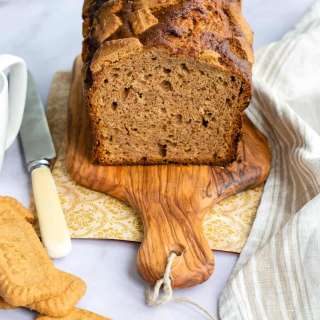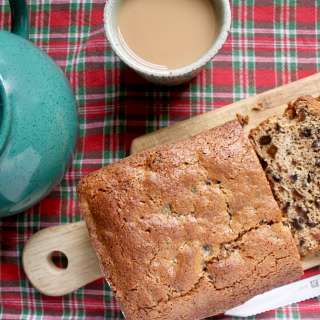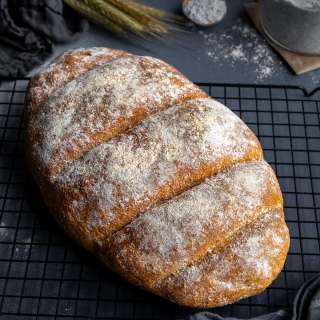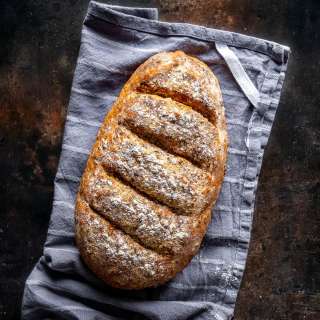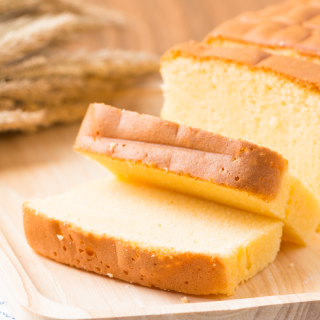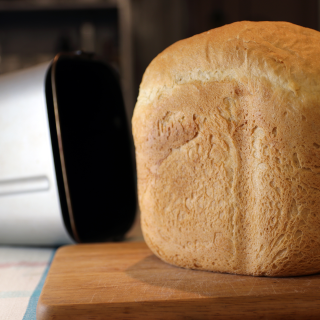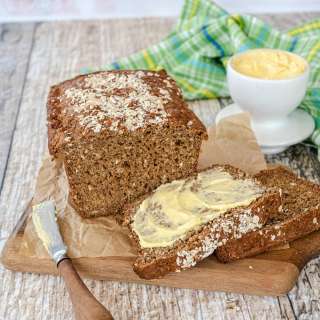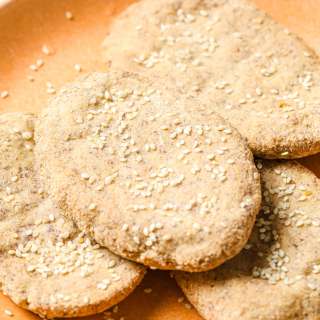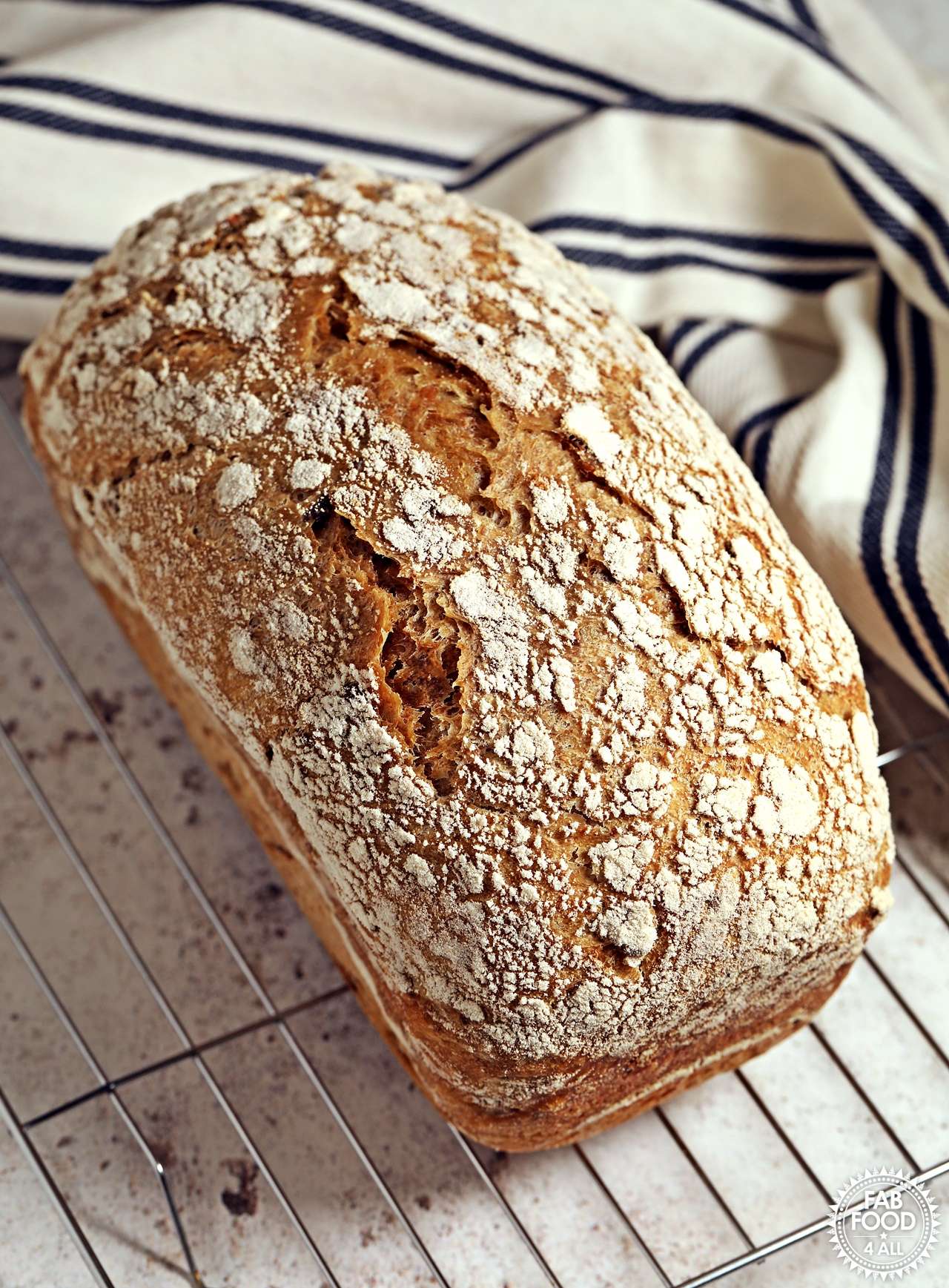
Easy Slow Cooker Sourdough Sandwich Bread
User Reviews
5.0
3 reviews
Excellent

Easy Slow Cooker Sourdough Sandwich Bread
Report
Easy Slow Cooker Sourdough Sandwich Bread needs just one rise, keeps your kitchen cool and saves you money. This recipe makes a delicious Malted Grain Sourdough Sandwich Loaf.
Share:
Ingredients
- 55 g starter
- 330 g tepid water boiled and cooled or filtered
- 250 g white strong flour
- 250 g strong malted wheat flakes & malt flour Cotswold Crunch or other strong brown flour mix
- 8 g salt flakes
- Rice flour for dusting
- Oil or butter for greasing tin
Instructions
- Start by feeding your starter with 30g of tepid, cooled boiled or filtered water and 30 g strong white flour and leave on the kitchen counter with lid ajar. It should double in size and be bubbly when ready to use. Place an elastic band around the jar of starter to mark the original level. (See Note 1 for further timing information).
- Make the sourdough by weighing out 330 g of tepid (previously boiled or filtered) water and 55 g of bubbly, active starter into a large glass bowl. Agitate to break up with a Danish whisk or fork.
- Zero the scales and add 250 g strong white flour, 250 g Cotswold Crunch or similar and 8 g of salt flakes.
- Mix to a dough with a Danish whisk or fork. If the dough does not absorb all the flour add a little more water until it does. (More likely if using different flour and especially wholemeal).
- Scrape down the sides with a dough scraper and mix the scrapings into the dough to form a shaggy dough. (Do not “knead” at this point, you’re just bringing the dough together).
- Cover the bowl with a glass plate and leave for 1 hour to rest at room temperature. This initial mixing and resting known as the autolyse stage.
- After an hour the dough will have spread out in the bowl. Then it’s time to stretch and fold the dough. Use a wetted hand (my new preference, see Note 2) or a dough scraper and pull the dough up from one side and stretch across to the opposite side, rotating the bowl as you go. Do this approximately 40 times (but counting is not important, see Note 3)) until your dough doesn’t want to stretch anymore. The dough will come together as a smooth ball that holds its shape. This takes about a minute or two to do.
- Cover the bowl with a glass plate again and leave to rest for 30 minutes at room temperature.
- Repeat the stretches and folds 3 more times every 30 minutes placing the plate back over the bowl each time. You’ll only need half as many folds (then progressively less) to get a ball of dough that holds its shape more or less. You’ll feel the tension as it won’t want to stretch anymore.
- After the final set of folds and stretches cover the bowl with an upturned glass plate and leave the dough to prove (aka bulk fermentation) and double in size. The dough should have a domed appearance and bounce back when poked with a floured finger. This will take roughly 8 – 14 hours depending on the temperature of your house but there is no set time. (See Note 4).
- Grease a 900 g (2lb) loaf tin with butter or oil.
- Then with a wetted hand, do one last set of stretches and folds in the bowl to form an oblong loaf shape (creating tension at the base). Keep stretching and folding from all sides, particularly the longer sides until the loaf shape holds. (See Note 5).
- Tip the bowl upside down dropping the dough onto a wetted hand and place it seam side down into the prepared loaf tin.
- Dust the top of the dough generously with rice flour (or leave plain, your choice).
- If you’re ready to bake use a lame to score the dough with a crisscross pattern etc or leave it unscored. (If you’re not ready, cover and place the dough in the fridge see Note 6.)
- Place the loaf tin into the slow cooker (Crockpot), set the heat to high and bake for 3 hours. (There is no need to put a tea towel under the lid see Note 7.
- Carefully remove the lid and tea towel from the slow cooker and test the bread for readiness by pressing a finger gently into the top of the loaf. It should spring back. You can also tap or knock the base and there should be a hollow sound.
- If the loaf isn’t ready continue baking until golden but that's highly unlikely (see Note 8).
- Once ready, lift the sourdough loaf out of the slow cooker with oven gloves. Tip the loaf out of the tin and onto a cooling rack.
- Allow sourdough bread to cool completely (2 – 3 hours) before slicing (see Note 9).
Notes
- Don't be timid with shaping or the loaf will not hold its shape while baking and spread over the sides of the loaf tin!
- I feed my starter in the afternoon ready for making the sourdough in the evening ahead of overnight bulk fermentation. The time it takes your starter to be ready for use will depend on many factors including the time of year and temperature of your kitchen so you’ll get to know these the more you bake. Your sourdough-making schedule will most likely differ from mine especially if you’re in a warmer country and will be much quicker.
- After using the scraper method for the pulls and folds for 2 years I strained my shoulder so I now use the wetted hand method which puts less strain on your joints.
- The number of times you do the pulls and folds will depend on your flour, humidity, etc so you might do 90. You just carry on until a ball that doesn't want to stretch any longer forms. The number of pulls and folds decreases with each proof as the gluten develops (making it more elastic).
- I leave my dough to rise overnight but the time to bulk ferment will vary with the season and temperature of your house. So slower in winter and quicker in summer.
- Don't be timid with shaping or the loaf will not hold its shape while baking and spread over the sides of the loaf tin!
- If you’re not ready to bake after the bulk fermentation cover the loaf tin (a beeswax wrap or cereal bag works well) and place it in the fridge until you’re ready. Then dust with more rice flour, score with a crisscross pattern (or leave plain), and bake as per the recipe. You can leave the dough in the fridge for 24 - 48 hours.
- Previously I advised to place a tea towel under the lid of the slow cooker before baking but have now found this is unnecessary and the loaf bakes better without one as there's less chance of it rising into the tea towel and getting damp.
- Previously I advised to bake the sourdough for 2.5 hours but with further development and removing the tea towel, I have found 3 hours works best for an all-round crusty loaf.
- Do not slice sourdough bread while warm as it will result in a gummy loaf.
Genuine Reviews
User Reviews
Overall Rating
5.0
3 reviews
Excellent
Other Recipes
You'll Also Love
Scottish Snowballs (Raspberry Jam Sandwich Cookies Dipped in Coconut)
British, Scottish
4.7
(153 reviews)
